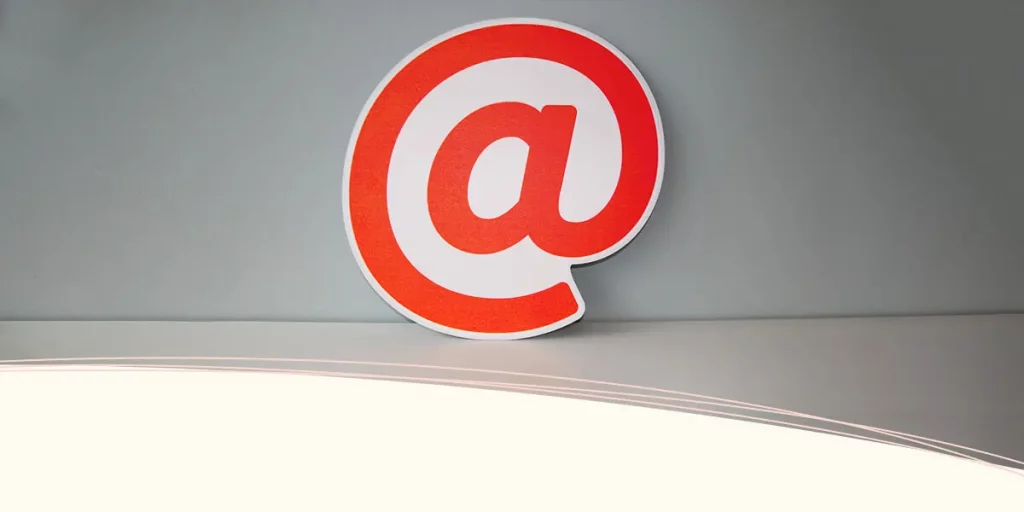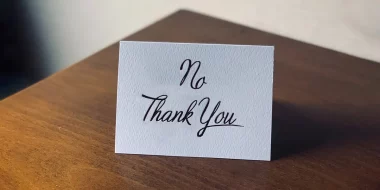Wondering what to write in email when sending a resume? We’ll let you in on a little secret — it takes more than just attaching your CV and hitting “send”.
In fact, knowing how to compose an email for sending resume can be the difference between landing an interview and getting ignored.
Sometimes employers provide clear instructions on what the email format should include. If that’s the case, follow the employer’s directions closely.
But if you can’t find any instructions, don’t worry — you can follow the best practices described in this article!
We’ll show you exactly what to say in an email with resume so you come across as professional and confident. Plus, we'll also give you 3 simple email templates you can download to make sure you know exactly what to say when emailing a resume.
- 3 sample emails for sending your resume to recruiters:
- How to email a resume: A few tips to keep in mind before sending the email
- Write an effective subject line. It's the first thing they're going to see
- What to write in an email when sending a resume to an employer? Follow these 5 steps
- Attaching files — resume and cover letter
- What should you do before sending your email?
- Watch out for these common mistakes
- Key takeaways: What to write in email when sending resume?
3 sample emails for sending your resume to recruiters:
Need an sample email to send a resume for job? Feel free to use any of these templates as your first draft.
Just click the red button below each sample and adjust the text to your liking.
#1 Template of an email to send with your resume
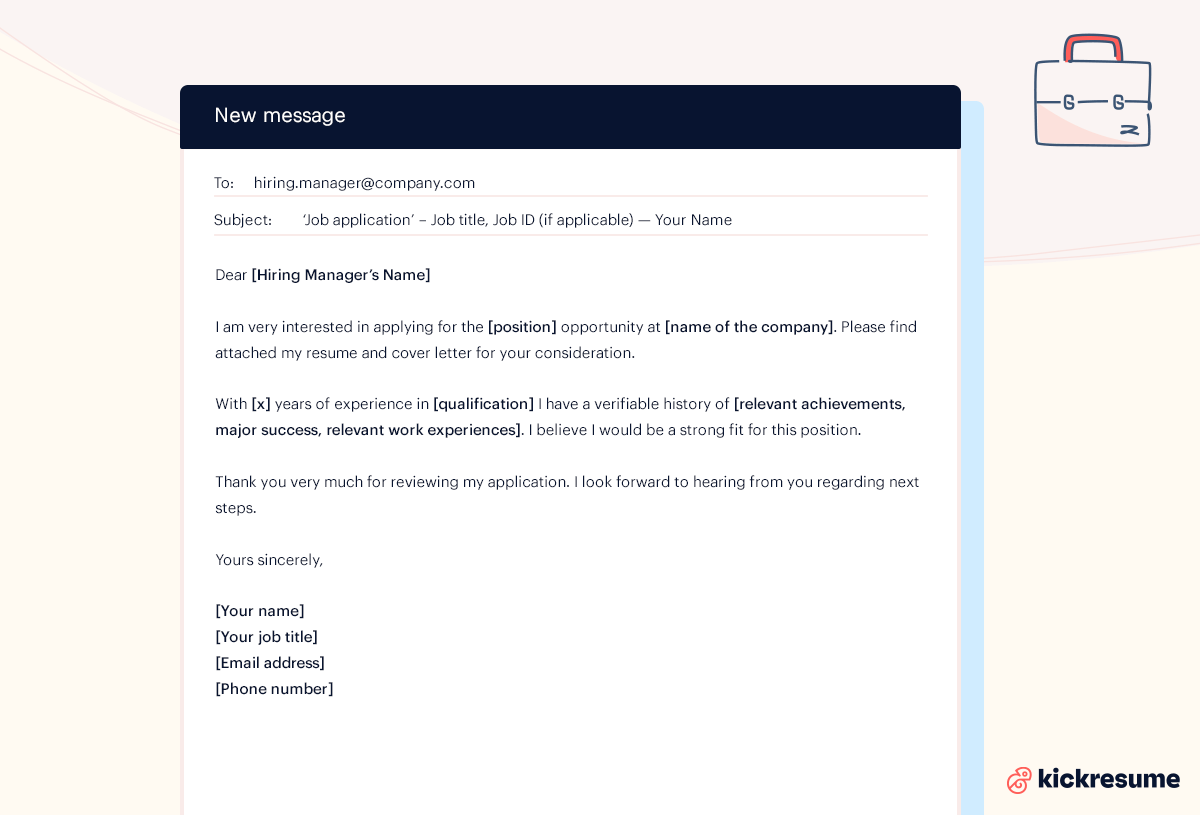
#2 Template of an email to send with your resume
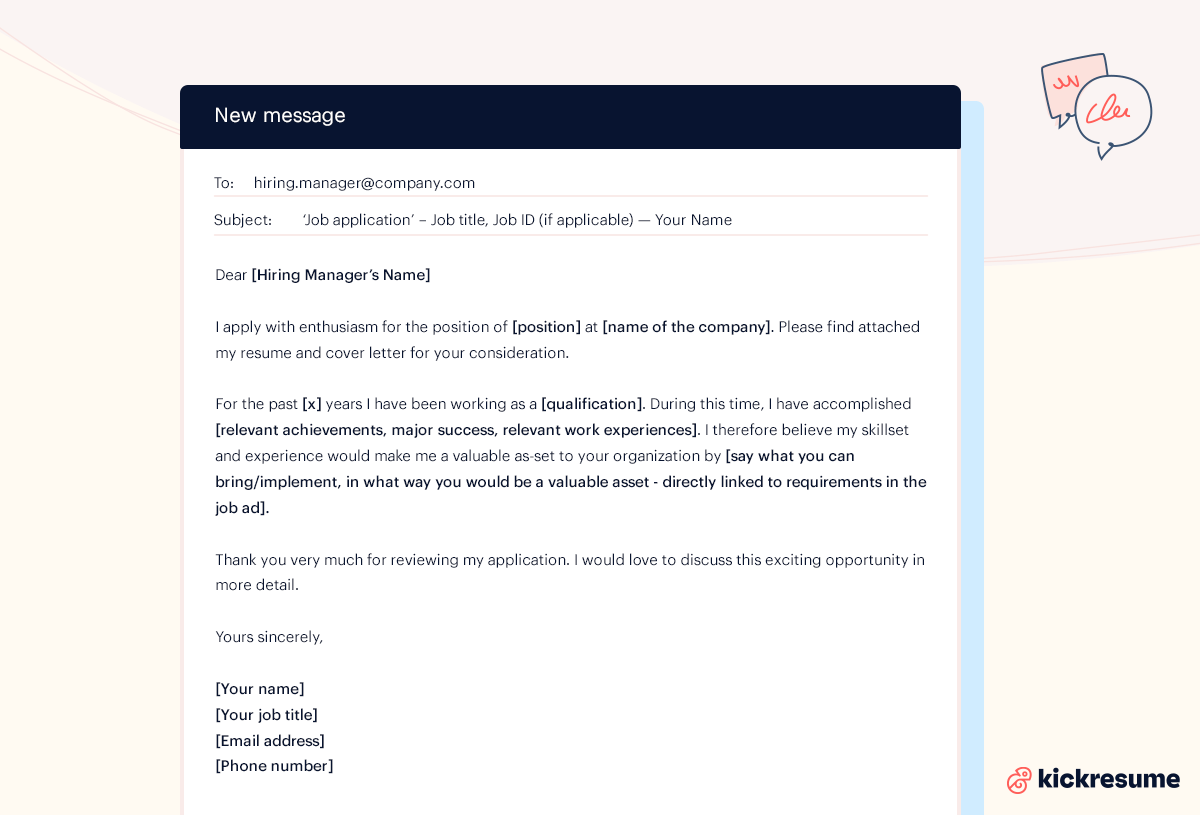
#3 Template of an email to send with your resume
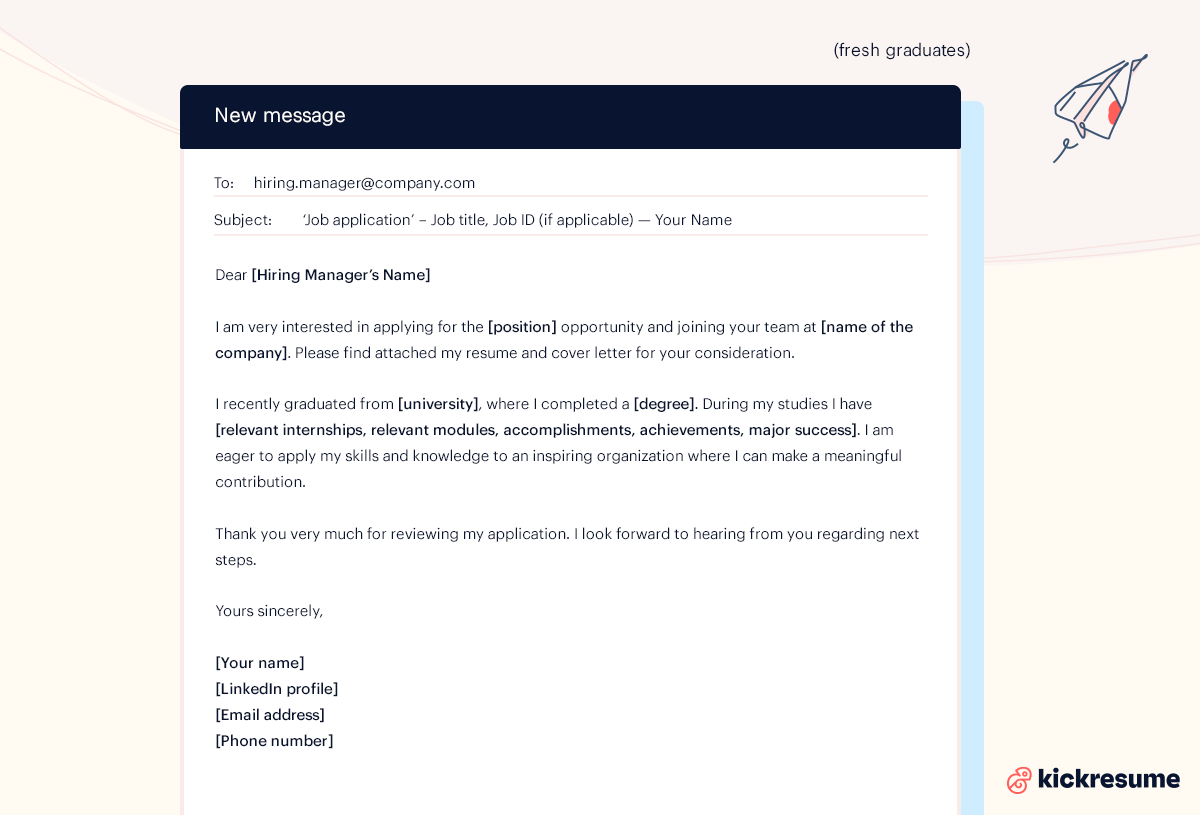
Additionally, these 10 more job application email templates will give you the help you need at any stage of the hiring process.
Finally, if you already have a fantastic LinkedIn profile but no resume, there's no need to write your CV from scratch. You can convert your LinkedIn profile into resume in seconds.
How to email a resume: A few tips to keep in mind before sending the email
Before we show you what to say in an email with your resume, let’s cover a few quick tips that’ll set you up for success:
- Find out who's going to be the recipient of your email. Try to find the hiring manager's contact details so you can address them by name. A slightly more personal approach can decrease the chance of your resume being forgotten or disposed of. In fact, did you know that small businesses account for 99.9% of all firms in the US? Tailoring your email to their needs—such as addressing the hiring manager by name—can significantly improve your chances of getting noticed.
- Remember that your email address needs to be professional. Emails like julezizcoolz@yahoo may've been cool in 2005, but not anymore. Instead, create a professional email address that consists of your first and last name.
- You should also consider when to email your resume. In general, you want your email to be among the first ones they receive that day. This means you should send it very early — ideally before 8am.
- The same applies for days of week. The later in the week you send your email, the lower the probability that someone reviews it. This is why you should send it very early on a Monday morning.
Of course, if it's a first-come, first-serve kind of job application, don’t wait around too long. But when you can, taking a moment to think about what to write in an email when sending resume can really give you that extra edge.
Key takeaways:
- Look up the hiring manager's contact details;
- Your email address needs to be professional;
- Send it on a Monday, ideally well before 8am;
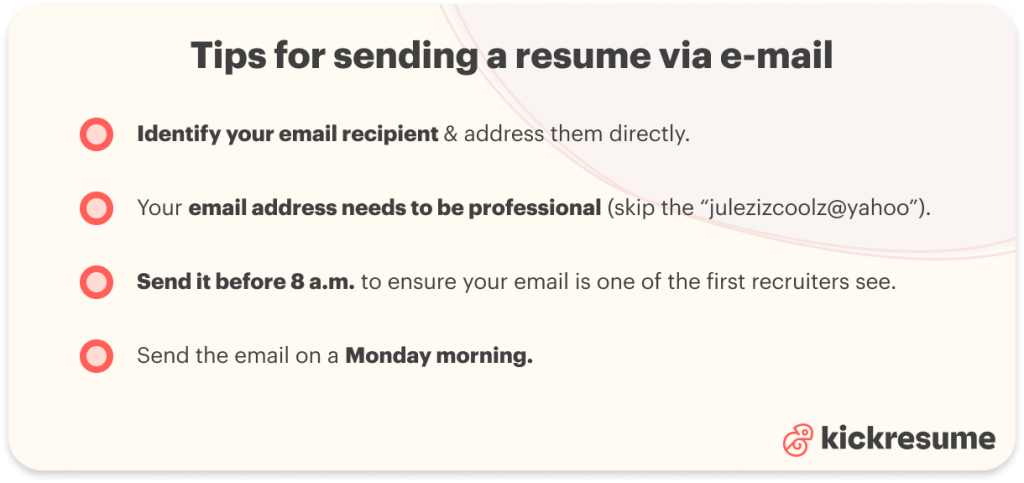
Write an effective subject line. It's the first thing they're going to see
Sure, the subject line is just a tiny part of the whole email. However, it's also the very first thing the recruiter is going to see. That's why you want the subject line of your resume email to be absolutely spot on.
First of all, check the job posting for instructions regarding the submission. There may be a preferred subject format the company uses. If that's the case, then you need to stick to it.
However, if there are no instructions, you should stick to the standard format for subject lines:
- Subject: ‘Job application’ – Job title, Job ID (if applicable) — Your Name
- Example: Job application – Office Manager, Job ID #1553 — Ian Lumberjack
- Example (with referral): Referral from John Wick: Job application – Graphic Designer, Job ID #1554 — Nina Hughes
If someone recommended you for the job, definitely make this clear in the subject line. You can add your title or qualification if you wish — but remember, keep the subject line succinct.
What to write in an email when sending a resume to an employer? Follow these 5 steps
Stuck on what to write in an email when sending a resume? No worries, we'll break it down into smaller steps so you can craft the perfect email without any problems.
- Start off with a formal greeting and address the hiring manager by name.
Firstly, to make your email a bit more personal, you want to address its recipient by name. Look at the company website or LinkedIn and try to find the contact person. However, if you can't find this information, it's perfectly fine to address your email without a name.
- Continue with an introductory paragraph and explain the who and the why.
In the first short paragraph you should state who you are, why you're sending this email, and what the email contains.
- In the main paragraph highlight your achievements & the value you can bring.
Thirdly, you need to present your best and proudest achievements. Of course, only mention those achievements that are relevant for the job. Close this paragraph by saying what value you would bring to the company and which skills you will use to accomplish this.
- Close with a call to action and propose next steps.
In the closing paragraph you need to say that you're looking forward to hearing back from them and meeting in person. You may add a captivating call for action but be careful not to sound rude or overly keen.
- Add a professional signature.
Finally, end your email with a classic signoff, like “Yours faithfully,” or “Yours sincerely.” Also, remember to include your contact details: your name, your job title, email address, phone number, and LinkedIn profile (optional). To be even more professional, consider creating a custom email signature. You can use HubSpot’s Email Signature Generator, which is a free tool that lets you customise your signature with your details and even add your logo or photo. Plus, it's easily integrated into various email clients, including Gmail, Outlook, Apple Mail, etc.
Remember, you want to keep the body of the email short and succinct. Don't go in too much detail otherwise you might loose the hiring manager's attention.
Keep in mind that you simply cannot elaborate on every accomplishment and every work experience due to limited space. The email needs to be informative and concise.
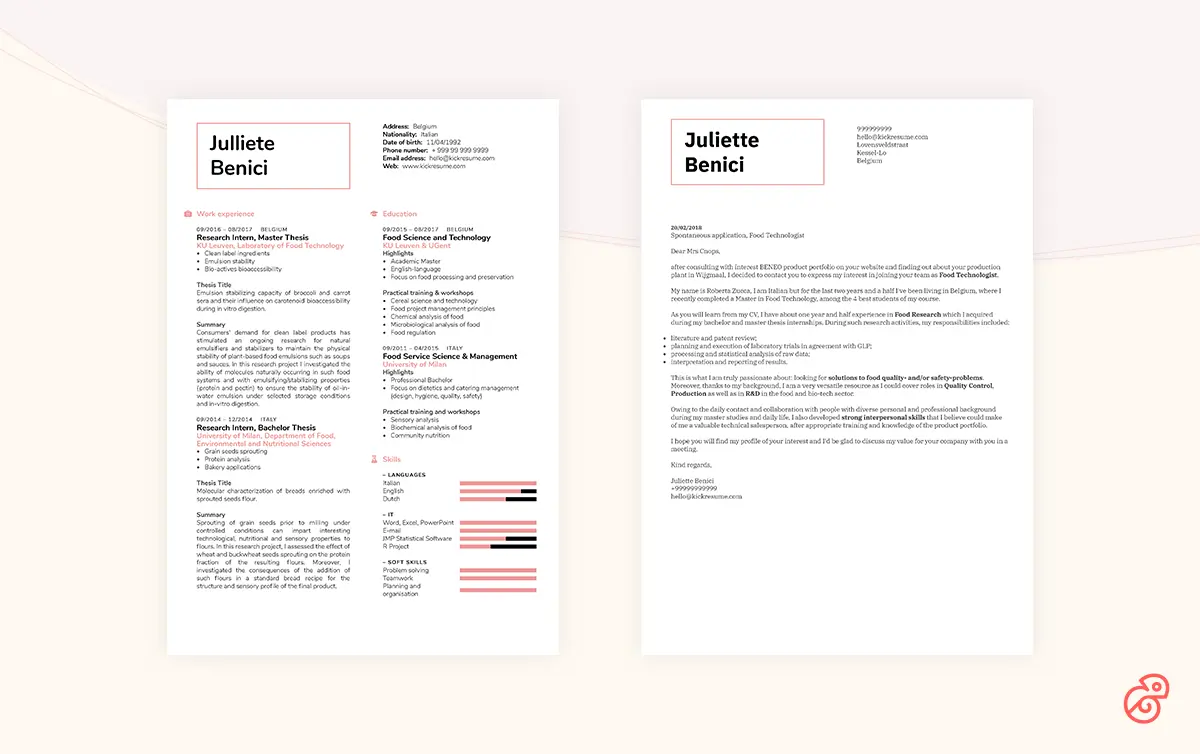
Attaching files — resume and cover letter
This should go without saying but, don't forget to attach your resume to the email!
You might think to yourself: “Well, of course!” But when you're busy figuring out what to write in email while sending resume, it's easy to overlook the basics.
Here are more valuable tips to guide you:
- Consider whether it's relevant to also attach your cover letter. When you apply for a job in bigger companies you may actually benefit from sending your cover letter as well as your resume. Just remember not to repeat yourself too much in your email body and your cover letter.
- Avoid naming the attachments generically or randomly. Names like fghjvh.pdf or resume2.pdf can make it hard for the hiring manager to find these documents later. Name your attachments in a way that makes them easy to find — Name_Surname_Resume.pdf and Name_Surname_Cover_Letter.pdf
- The best format for sending your resume and cover letter is .pdf or .doc. We suggest saving your documents as PDFs, since it's a universally accepted file format, it's easy to open and will not distort the formatting of your documents.
If you’re considering sending a video resume, you should know how to convert video to MP4, as it’s the most common format supported across different browsers and devices.
Keep in mind that files should not be larger than 10MB. Otherwise they might be considered suspicious.
Last but not least, before sending it out, get your resume analyzed to make sure it contains everything it should.
Key takeaways:
- Resume and cover letter need to be sent as attachments;
- Name your attachments in a way that makes them easy to find;
- Save documents in the PDF format;
- Files should not be larger than 10MB.
What should you do before sending your email?
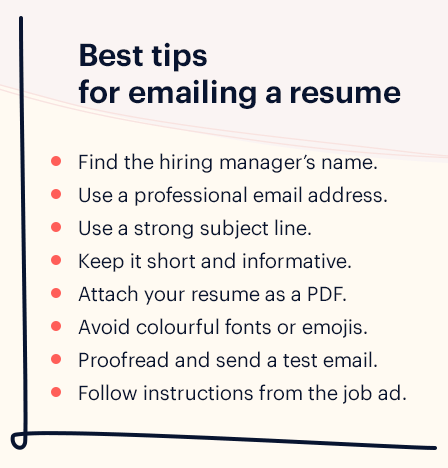
Before you send the email with your resume and cover letter, you should check it for any spelling or grammatical mistakes.
Having bad grammar is definitely not something you want to be remembered for. Ask a friend to proofread all your documents. It can make a big difference.
Additionally, it may be a good idea to send yourself a test email to see whether the formatting and layout of the email is up to the expected standard.
Don't forget to test download and open your files. Check whether you've attached the right file(s).
Also, avoid using any colorful fonts, pictures or emoticons.
Watch out for these common mistakes
Once again, when you’re figuring out what to write in mail while sending resume, it’s easy to make silly mistakes. But, unfortunately, even the smallest errors can seriously hurt your chances.
That's why you should watch out for these common pitfalls:
- Sending large attachments. Attaching a huge file can clog up the recipient’s inbox or even cause your email to bounce back. So, keep your resume file size under 10MB.
- Sending a generic email. Another big mistake is sending a generic email without tailoring it to the specific job or company. This shows a lack of effort and interest. Always personalize your emails!
- Not following instructions. If the job posting asks for a specific subject line, file format, or any other detail, do as instructed! Because ignoring these guidelines can make it seem like you didn’t pay attention or don’t care enough to follow through.
- Using a tone that's too casual. While it's great to be friendly, you still want to come across as professional and respectful. Slang, emojis, or overly informal language might make it seem like you’re not taking the application seriously.
- Sending your email without proofreading. Taking a few extra minutes to carefully review your email can make all the difference. After all, it’s your first impression, so make sure it’s a good one!
By avoiding these common mistakes, you'll ensure your email makes a positive impact and improves your chances of landing that interview!
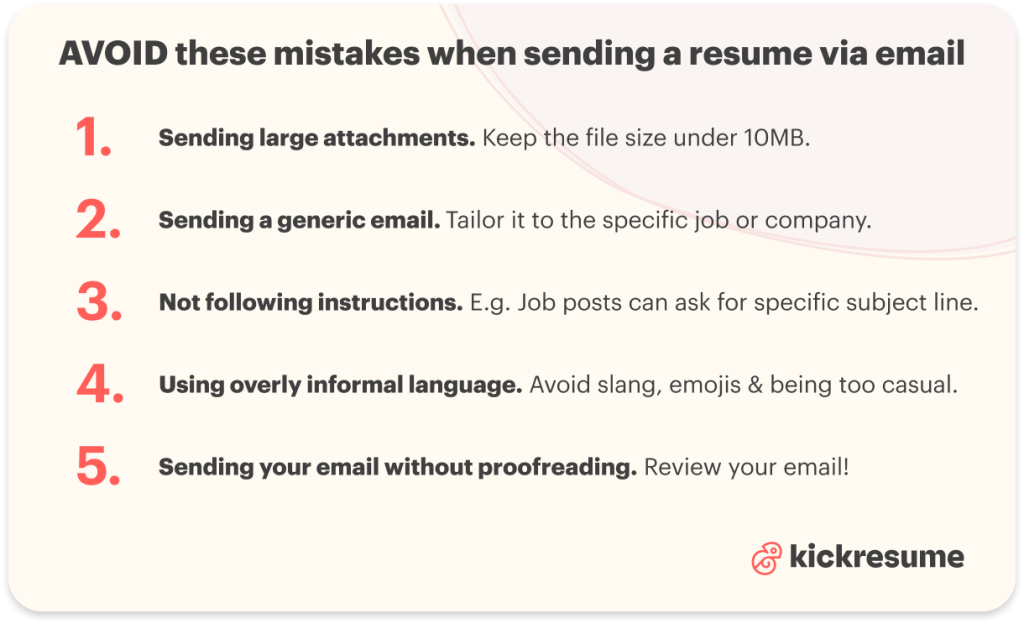
Key takeaways: What to write in email when sending resume?
Sending your resume attached to a well-written email can be a very effective strategy. It can help you find a way around ATS algorithms that filter out unsuitable resumes before they can even get to an HR employee for evaluation.
So how do you write one?
- Before you start writing the email, make sure you know who to address. Knowing the hiring manager's name will make the email feel more personal and decrease the chance of it being forgotten.
- Your resume address should sound professional. Send your resume email early on a Monday morning for maximum effectiveness.
- We have provided you with email templates. No matter which one you choose, remember — keep the email short, informative and professional.
- Attach your resume and cover letter in the PDF format and name them in a way that makes them easy to find, for example Name_Surname_Resume.pdf and Name_Surname_Cover_Letter.pdf
- After you have written the email and attached the documents, ask someone to proofread it for you to avoid any grammar errors and typos. Lastly, send yourself a test email to check the formatting and test download the files.
After you send in your resume, cover letter and your job application, wait for a couple of days before sending a follow-up email.
Concluding thought — even if you construct the perfect email to send with your resume, you still need to make sure you have an impressive resume and cover letter.
We've got you covered. Check out these articles to help you create the perfect resume and cover letter:
- How to Write a Resume: The Only Resume Guide You’ll Need in 2024
- The Only Cover Letter Guide You’ll Need in 2024 (+Examples)

FAQ
- What to write in an email when sending a resume?
When emailing your resume to a hiring manager, start with a formal greeting using their last name. In the first paragraph, briefly introduce yourself and explain the purpose of your email. Next, highlight your most relevant and proud achievements, linking them to the value you can bring to the company and the skills you'll use to achieve this. Conclude by expressing your eagerness to hear back and the hope of meeting them in person. Sign off with "Yours faithfully" (US English) or "Yours sincerely" (British English), and include a professional signature with your contact details.
- What to write in an email when sending a resume subject?
When sending your resume to a hiring manager via email, the subject should always include your name and purpose, e.g. Job application – Job title — Your Name.
- What to write in an email when sending a resume with reference?
In your email when sending a resume with a reference, briefly introduce yourself, mention the position you're applying for, and how you came to know about it. Specifically mention your reference's name and your relationship with them. Then continue by highlighting your most relevant and proud achievements, linking them to the value you can bring to the company. Conclude by expressing your eagerness to hear back and meeting them in person. Sign off.
